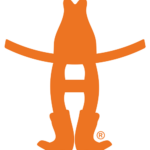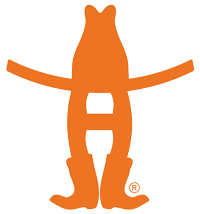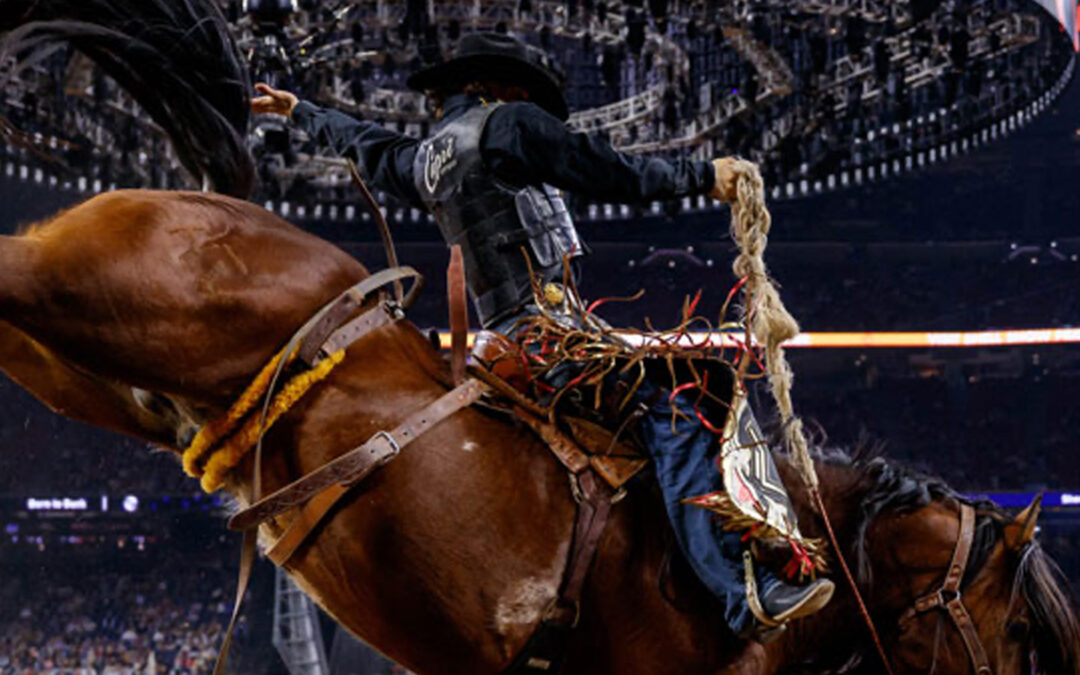The professional cowboys and cowgirls who compete in rodeos are well aware of the risks and dangers. So when they are in the arena, they wear specific gear to help protect their bodies while going for the ride of a lifetime. Dressing as a cowboy is much more than a fashion statement to these athletes.
“Obviously what we do is a pretty intense sport,” saddle bronc rider Lefty Holman said. “Injuries are not if they’re gonna happen, it’s when they’re gonna happen when you’re going against a 1,700-pound beast.” That’s why most cowboys wear protective gear customized to their event. Holman wears chaps and a padded vest, and because of past injuries, he also uses a knee brace and Elastikon tape to support his knees. “I don’t have very many ligaments left in my knee so I use tape to act as those ligaments, so it’s more stable,” Holman said. “We go through four rolls every time I get on.” With 100 rides a year, that’s about a mile of tape.
Veteran bareback rider Bill Tutor said he also wears a padded vest, elbow brace and a neckroll to help him deal with the whiplash that comes with competition. Then there’s the mouthpiece, which serves two purposes. “I think they’re great for reducing the risk for concussion, when the horse does hit you in the head with its butt,” said Tutor. “It’s something to bite down on, which helps you keep your chin tucked.”
The pickup men, like Randy Britton, who come to the athletes’ aid during and after rides also take extra precautions for both themselves and their horses. “We come in after 8 seconds and pick the cowboys up and get them down safely and then get the bucking horse out of the arena safely,” he said. Britton has worked for Cervi Championship Rodeo since 2012 and at RODEOHOUSTON® since 2017. He wears heavily padded chaps and “kickers” (similar to shin guards) to protect his legs.
His horses wear something called split boots, which protect their front and back legs.“ The backs are for protection from a horse stepping on them,” Britton said. “I’ve ruined plenty of back boots. They’re expensive, but they’re not nearly as expensive as a horse. They’ll be ripped, but there won’t be a scratch on the horse. If that boot was not there, he probably would have been crippled for quite a while.”
The athletes and the pickup men said that beyond the gear, it’s good preparation that also helps keep them safe, which is exactly why Holman makes workouts a priority. “A lot of it is preventable if you train your body the right way and take care of yourself the right way,” he said.
Holman added that his wife still worries about the danger but knows it is part of the life of a professional cowboy. “It all kind of comes with the sport, and we love the sport. It’s a true blessing to get to do this at the highest level and get to come to RODEOHOUSTON.”
But, as he said, it’s not if but when athletes like Tutor and himself will experience some sort of injury while competing in the Rodeo circuit. When Tutor was sidelined for three months due to a groin injury, he trained with Justin Sports Medicine, JSM, who created a custom workout to get him back to competing again. “It’s definitely not your stereotypical workout. [JSM] doesn’t have me lifting a ton of weight,” he said. Instead, Tutor focused on making his entire body strong and explosive so he can safely react on the back of a bucking horse “I think your physical fitness helps in the reduction of injuries and improves your longevity,” Tutor said. It’s just part of what they all have to do to make their rides a safer eight seconds.




